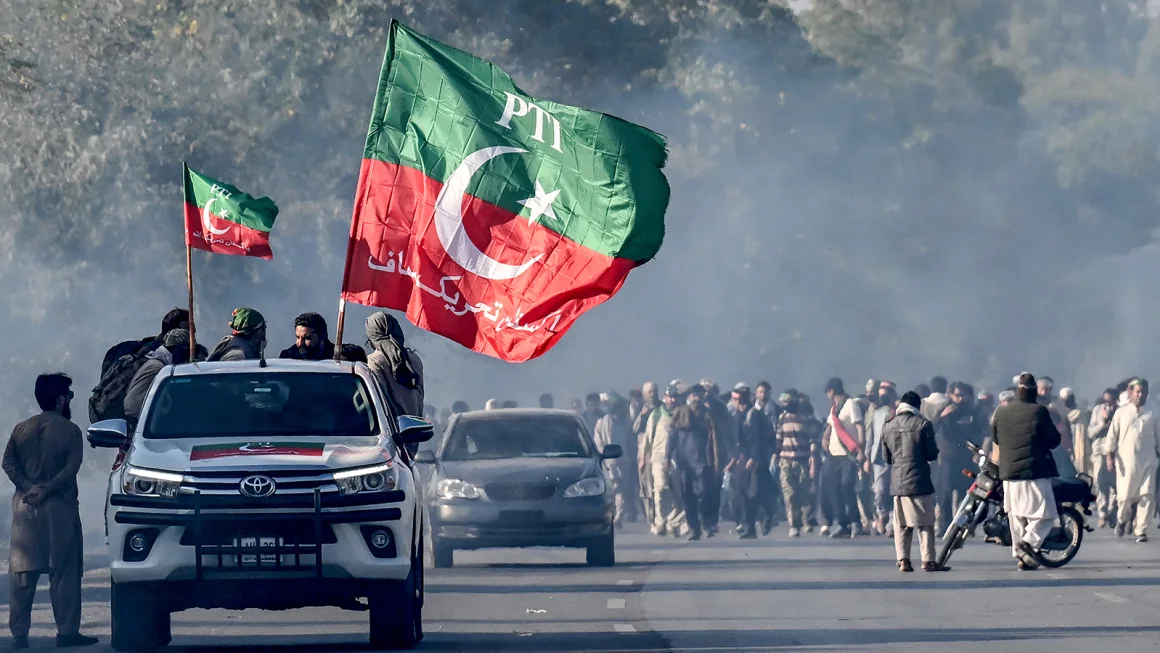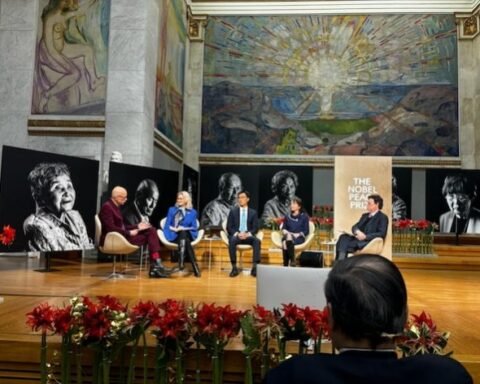Pakistan has once again avoided a full-scale crisis, but tensions continue to simmer as the political divide deepens. The Pakistani government successfully thwarted a second assault on the national capital by supporters of former Prime Minister Imran Khan in just two months. The protests, led by Khyber-Pakhtunkhwa (KP) Chief Minister Ali Amin Gandapur, aimed to reach D-Chowk in Islamabad, a symbolic location near key government buildings. Despite heavy crackdowns, roadblocks, and a nationwide communication blackout, the protesters pushed forward.
This latest attempt to bring Islamabad to a standstill came after a call from Khan himself, who is currently incarcerated. From his prison cell, Khan instructed his supporters to march to the capital and stage a sit-in at D-Chowk, demanding his release and other political concessions. The protest was scheduled for November 24, one day before the arrival of Belarusian President Alexander Lukashenko for an official visit.
The protest convoys were again spearheaded by Gandapur, but this time, he was operating under the direction of Imran Khan’s wife, Bushra Bibi, who had been released on bail a few weeks earlier.
Bushra’s hardline stance left little room for negotiation, and the leadership rejected the government’s offer to hold the sit-in at a less sensitive area in Islamabad. The government responded with severe security measures, including the deployment of the military with “shoot at sight” orders. Clashes between protesters and security forces led to casualties on both sides.
Despite the heavy crackdown, PTI protesters managed to reach D-Chowk on November 26, but they were forced to retreat under intense government pressure that night. The government denied firing on protesters, but PTI has reported casualties and missing individuals among their ranks. Additionally, a TV journalist who questioned the government’s narrative was arrested on charges of terrorism.
While the government claims to have avoided a crisis, the underlying tensions remain. This episode is part of a broader political struggle between Imran Khan and the Pakistani establishment, particularly Army Chief Asim Munir, who Khan had clashed with when he was in office. The animosity has deepened since Khan’s removal from power and his subsequent arrest, with PTI leaders facing ongoing legal challenges and repression.
Further fueling the conflict, the government has taken steps to limit the influence of PTI in Pakistan’s political landscape. Despite a Supreme Court ruling in PTI’s favor, the party has been denied its reserved seats in the National Assembly. The government has also made constitutional amendments that could undermine PTI’s ability to seek relief from the judiciary. Meanwhile, Khan’s political future remains uncertain, as his legal battles continue and his wife faces the possibility of re-arrest.
The crackdown against PTI protests highlights Pakistan’s deepening political polarization. While the government has managed to suppress these protests through force, the ongoing unrest further strains the economy and diverts attention from pressing national issues, such as Pakistan’s fragile economy and the increasing threat of terrorism.
Khan’s continued popularity, especially among the Pakistani diaspora and in his strongholds in KP and Punjab, means that his struggle is far from over. His supporters have mobilized increasingly larger crowds, signaling the potential for further periodic protests and turmoil.
Recent events have also revealed cracks within PTI, as the prolonged incarceration of Khan has started to take a toll on party unity. Despite these challenges, Khan’s supporters remain steadfast, with some warning that the focus of their protests is not just about personal grievances, but a larger struggle for political power.
The deep political divide in Pakistan suggests that, unlike Nawaz Sharif, who once accepted exile under similar pressures, Khan is determined to stay in the fight. His strong support base and enduring defiance against the military establishment make him a persistent challenge for the government, even from abroad.
Imran Khan’s position as a prominent political figure, especially in KP, has long been tied to his opposition to military operations in the region and his interactions with the Tehreek-e-Taliban Pakistan. His ability to leverage both his political connections and regional support suggests that the country’s political crisis will likely continue to intensify in the coming months. If mistreated further, Khan’s identity as a Pakhtun leader could further complicate the establishment’s efforts to quell unrest, particularly in the volatile tribal areas.





